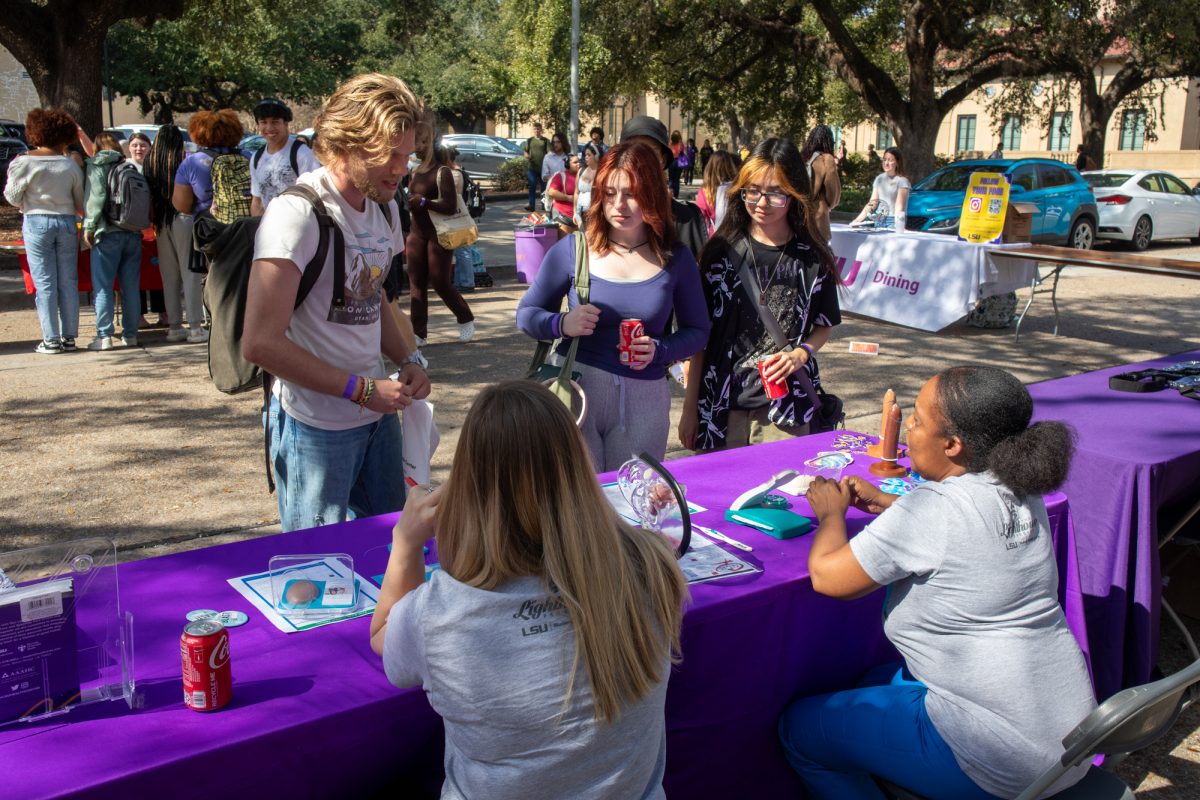It’s a lot like origami.
The body starts with a flat chain of amino acids. Following its DNA blueprints, the chain begins to fold like a piece of paper.
As it continues its complex transformation, the once inert collection of material begins to form into one of thousands of three-dimensional structures the body needs to operate.
And it all happens in less than a minute.
But researchers in the field of medicine aren’t concerned so much about when this amino acid origami folds correctly as when it doesn’t.
That’s when genes can fuel cancer or start the brain’s decent into Alzheimer’s disease.
“Proteins are like little machines,” said Chris Halweg, a 2004 alumnus of the genetics graduate program.”They have to have a 3-D structure to work properly.”
But simulating this folding process isn’t easy, even for the world’s fastest computers.
“There’s a lot of different calculations to figure out how they form,” Halweg said. “Each step has to be done properly.”
During his time at N.C. State, Halweg heard about a program that gave scientists an even more powerful tool than a supercomputer: the home computer.
Halweg learned about a program called Folding@Home, initiated by a team at Stanford University. It uses a concept called distributed computing to spread large workloads around to multiple computers.
By downloading a program from Stanford’s Web site, Folding@Home allows users to donate their computer’s spare processing time to run calculations on small portions of information, called work units.
“Basically, it uses excess computer time that you don’t use,” Halweg said. “It’s software that runs low priority.”
After the computer finishes its work, it sends the results back to the Stanford database, where scientists can analyze it.
But Halweg wanted to do more than just participate.
He decided to start up his own team, made up at the time of friends and family, with NCSU’s own branding.
“I figured there would be a lot of people that would be interested,” he said.
Click here to visit Halweg’s group web site.
Since it began in 2001, members of the Wolfpack Folding@Home have calculated more than 100,000 work units for Stanford’s research, which is focused on everything from cancer to Parkinson’s.
Halweg said he got involved on the ground floor of the project. That’s evident by the fact that the team was the 59th to form — out of more than 83,000 now.
“I basically signed up on the first day it was available,” he said.
Halweg now has three computers running the program. He even installed a version made for the Playstation 3 on his game system.
From Google to the Genome
According to Xiaosong Ma, an assistant professor of Computer Science, the concept of distributed computing has broad applications. Its most common usage, for example, is the Internet.
“You see it everywhere,” she said, and pointed out that a simple Google search can use thousands or tens of thousands of computers.
Even the Search for Extraterrestrial Intelligence, or SETI, has taken advantage of the concept.
That’s where Albert Ahr, a 2007 graduate of computer engineering and member of Wolfpack Folding@Home, said he first heard of the application. But he said searching for aliens didn’t really peak his interest.
“Trying to beat cancer is more important than that,” Ahr said.
Like the SETI@Home project, Ma said the Stanford group’s application takes advantage of the computing power of the rapidly evolving home system.
“The beauty is that it allows the use of all idle, unutilized sources,” Ma said.
Ma’s research focuses on similar projects that utilize distributed computing in areas like bioinformatics. She said she’s one to two years away from a program that could perform complicated search tasks — like matching genome samples with known sequences.
She said distributed computing will only become more powerful as personal computers evolve. But she also pointed out that as medical knowledge expands, the tasks these systems must perform will only get more complicated.
“This job is computer intensive and data intensive,” she said. But the “curve of database growth is very fast.”
Scoring for Science
Beyond pure altruism, Halweg said there is an extra element to participating in the Folding@Home project.
Each work unit is worth a certain amount of points, which the system tallies. Halweg said most units are worth about 100 to 500 points, depending on its size and how long it takes to complete.
“It actually makes it slightly competitive,” Halweg said. “Some people get serious about it.”
Wolfpack Folding@Home has racked up more than 13.5 million points since its inception and is ranked 96th.
Although he said their primary goal is to get people to contribute to the project, Halweg also said he wants to keep the team in the top 100 — and beat other university teams. He said Mississippi state is beating the team now, but the NCSU team is snagging points at a faster rate.
“We should be catching them in about two months,” Halweg said.
Since he joined the group about eight months ago, Ahr said he’s been recruiting on Facebook and on The Wolf Web to get more members. With 59 members actively working on the project, the group is the largest it’s been.
“We’ve been on a pretty good climb upward,” Ahr said.





